UV-lasers experiment demonstrates why comets have green heads
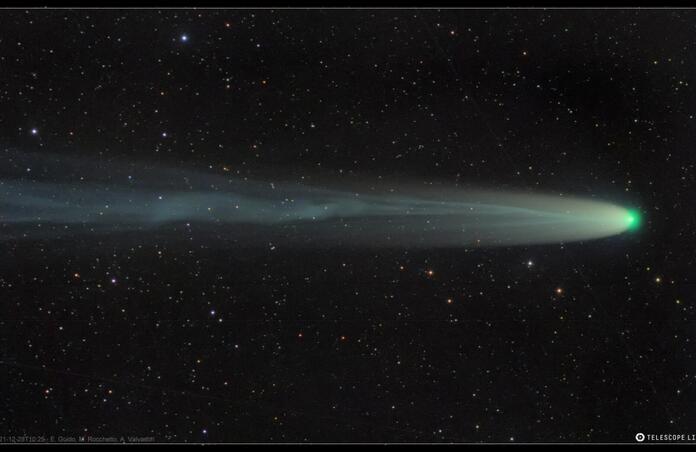
Chemists have found an answer as to why astronomers observe comets with green heads, but no green tails.
A comet will typically be described to you as an icy body that orbits the Sun in a highly eccentric orbit; as it approaches the Sun, its solid ice turns into vapour – a process known as sublimation – and we see a coma, the haze around the comet’s nucleus, and a comet tail. But as you can notice on a majority of photographs of comets, a comet’s head has a green hue to it. From an ever more detailed look, one can tell that the tail of the comet is not green and that the green coma narrows as the comet reaches its closest approach to the Sun.
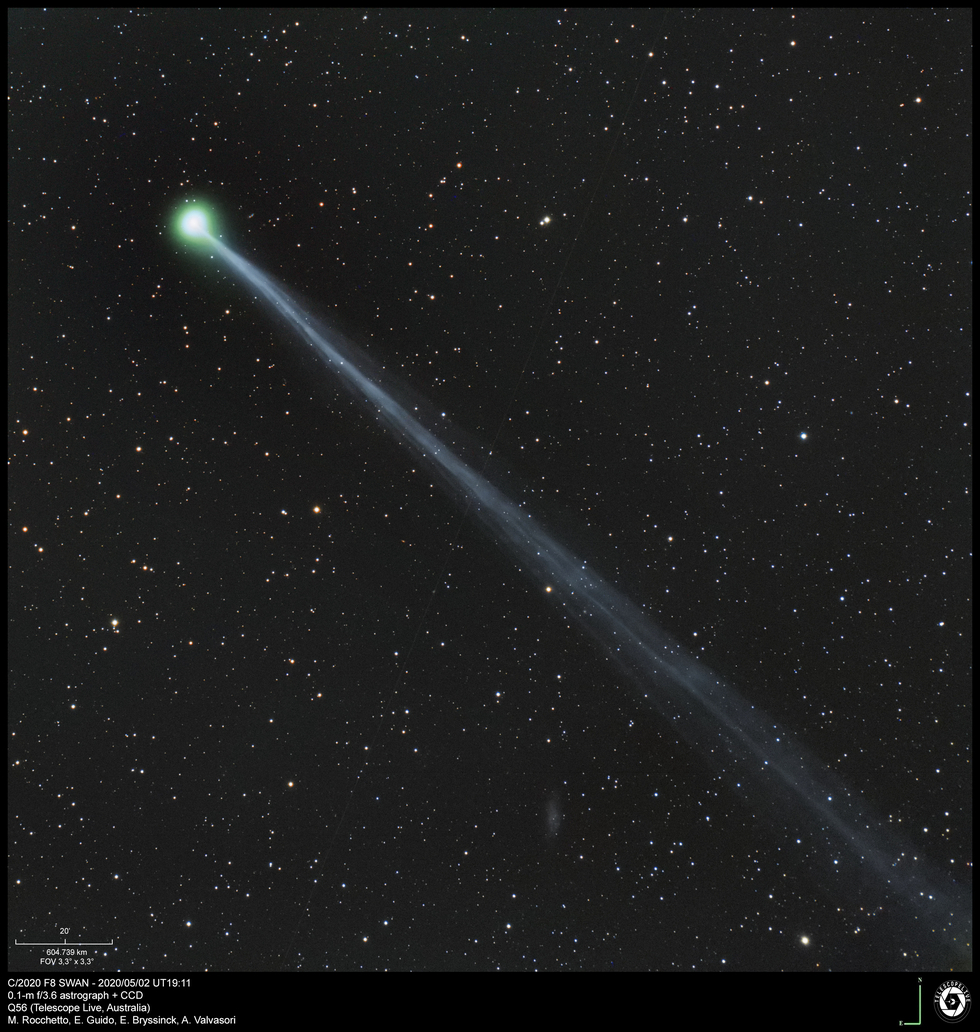
Comet C/2020 F8 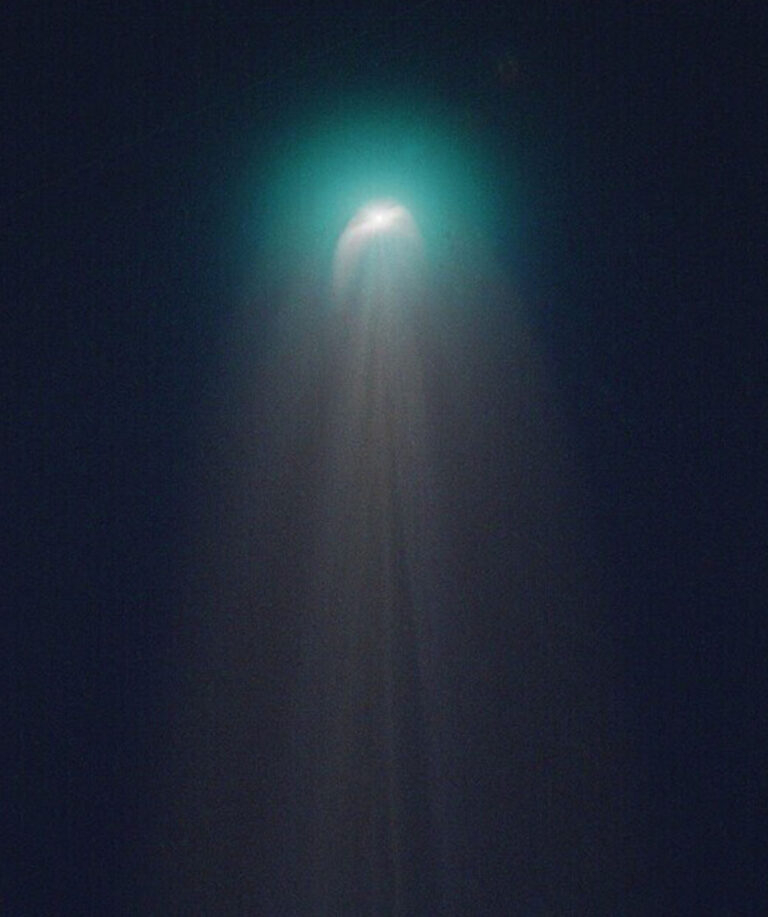
Dust jets blast from comet Leonard's nucleus Comet ISON
These measurements may seem unrelated, but they have all to do with the phenomenon of photodissociation. In the simplest terms, photodissociation is when a molecule gets broken up into parts or individual atoms under the effects of radiation. For our comets, the significant source of radiation is of course the Sun, but specifically ultraviolet light. The molecule is diatomic carbon, or dicarbon, which is just two atoms of carbon together and it’s when it reacts with UV light that we obtain the green tinge. Dicarbon is also quite unstable, which means it doesn’t exist as such on comets: it gets produced when the comet approaches the Sun and organic compounds start to evaporate into the coma, leaving behind dicarbon that gets dissociated quickly enough for it to not reach the tail. As more and more of the diatomic carbon gets broken up, the coma shrinks.
The chemical reaction was recreated in a laboratory setting in a vacuum chamber and with a UV laser setup. This was challenging not just because the dicarbon molecules are intrinsically unstable, but also because UV light is invisible to the human eye and finding the right laser alignment to dissociate the molecules has best been described by the authors of the study as “stabbing in the dark”. Anyway, they were able to find this evidence for the photodissociation mechanism, which is essential to complete our picture of how comets get their artful features, and furthermore may be key to evaluate the role that comets played to bring carbon and other elements essential for life to Earth.
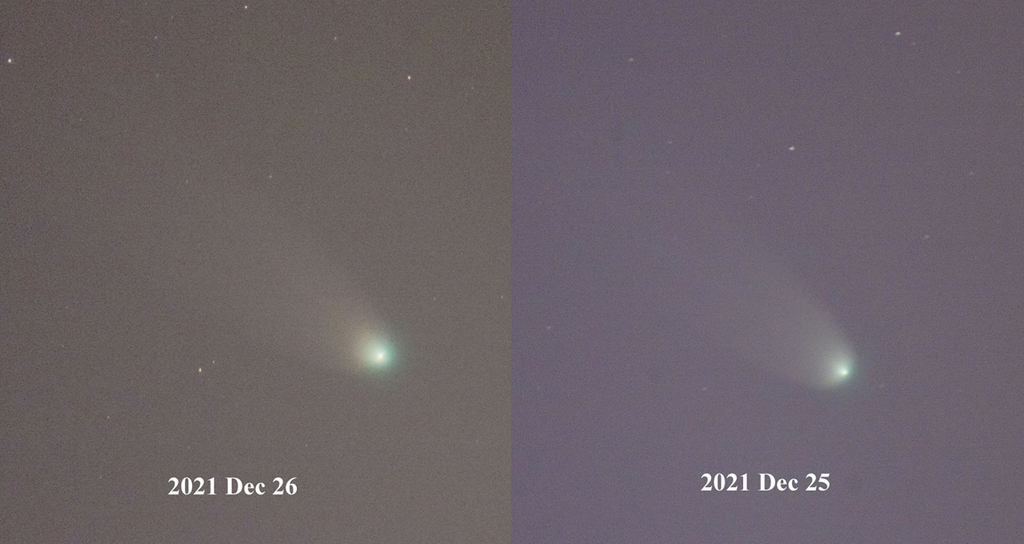
If you would like to image a greenish comet head yourself, note that Comet Leonard is still visible in the evening sky, and that in both hemispheres! It made its closest approach to Earth on the 12th of December, but underwent flashes on the 15th, 20th and 23rd December. These are likely due to ice containing more dust than usual vaporising as the comet approaches the Sun – it will reach its perihelion, or closest approach to the Sun, on the 3rd of January so more outbursts are possibly going to illuminate the night sky (if you are using binoculars or a telescope, as it is too faint to be seen with the naked eye).
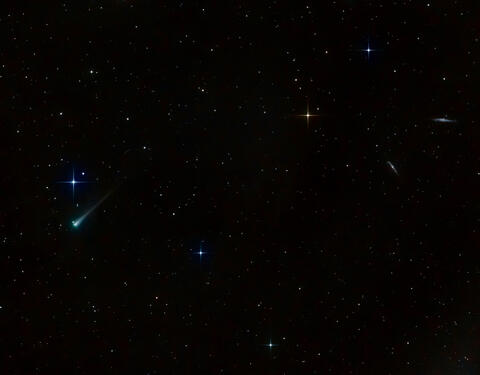
Comet Leonard close to the Whale galaxy 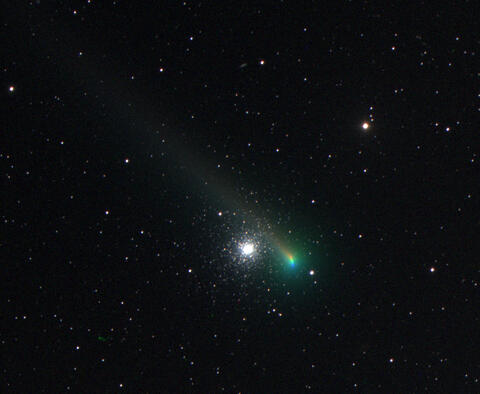
Comet Leonard close to M3 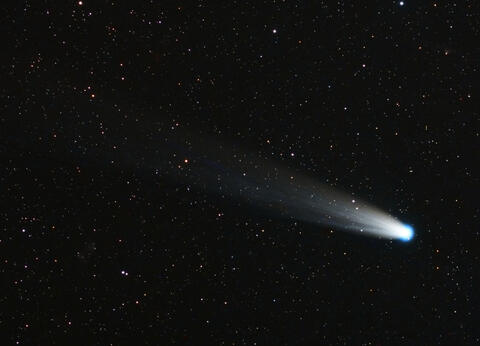
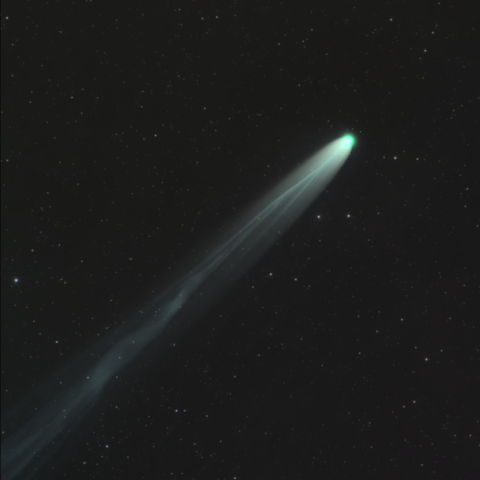
And if that’s not enough comet-photographing for you, watch out for C/2021 O3 that is expected to be closest to Earth in the first week of May 2022 !
Cover Image: Comet Leonard, E. Guido/M. Rocchetto/A. Valvasori
Image Credits:
1 - Comet C/2020 F8, E. Guido/M. Rocchetto/A. Valvasori/E. Bryssinck
2 - Dust jets blast from comet's false nucleus, M. Jäger/L. Demetz/Q. Yang
3 - Comet ISON, NASA/MSFC/A. Kingery
4 - Changes within comet Leonard's coma, A. Ebrahimi Seraji
5 - Comet Leonard close to the Whale galaxy, E. Stickel
6 - Comet Leonard close to M3, S. Trattnig
7 - Comet Leonard (AUS-2 one-click), N. Streeter
8 - Comet Leonard (AUS-2 one-click), P. Yates
